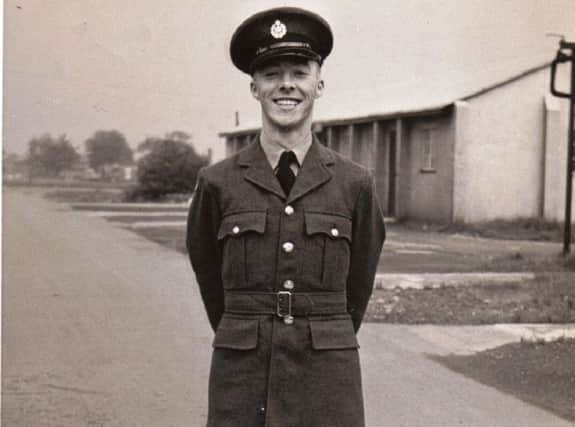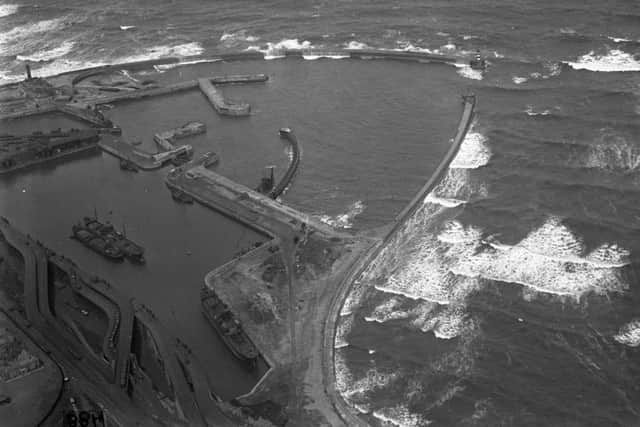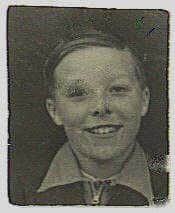Seaham's fightback after terrifying air raid - one man's memories


We told how Les, then seven, was out playing with a friend in Beech Crescent, Parkside.
The sirens sounded. Les and his pal headed for the air raid shelter at the back of his pal’s house and then came “a deafening noise mixed together with exploding bombs, screaming aircraft engines and the rattle of their gunfire.”


Advertisement
Hide AdAdvertisement
Hide AdToday, we continue his story with a look at the aftermath of the attack in August 1940.
“Someone came round the corner of Daphne Crescent and said there were two unexploded bombs,” Les remembered.
Minutes earlier, all eyes had been on the skies filled with bombers. Now they were turned on a field between Daphne Crescent and the Dawdon Dene.
Les and his pal ran round the corner and “joined a small group of people by the wooden fence at the edge of the field.”


Advertisement
Hide AdAdvertisement
Hide AdAir Raid Precaution wardens called for the bomb disposal team. The buzzing local community had other talking points too.
“A man was showing some of the people where bullets from some of the aircraft had hit some of the house walls,” said Les.
And then came the sound of aircraft again. Thankfully, it was three RAF fighters returning to their base in Durham. “The small crowd of people waved and cheered and probably other small crowds gathered around Seaham did the same. The fighter at the back of the three did a victory roll and this brought loud cheering from the crowd.
“This victory roll, though frowned on by commanding officers, was a great morale booster for those below who had just come through the most terrible ordeal.”
Advertisement
Hide AdAdvertisement
Hide AdThe two young lads had their arms around each other’s shoulders as they “cheered those heroes in the sky who had chased away the enemy.”
But as the instant commotion died down, the full effect of the attack became clear.
Funeral after funeral was held in the days that followed.
Those who died included a colliery banksman, a family of four (including two daughters aged 14 and 19), and a mother and daughter.
And yet Seaham was undaunted, despite the great shock of a “daylight raid over Seaham.”
Advertisement
Hide AdAdvertisement
Hide AdThe people of the town were “determined to get on with their lives and face any future difficulties that might come”.
Local groups helped the war effort, and a special meeting of New Seaham Working Men’s Club decided to give the Government an interest free £1,000 loan.
Even the children of Seaham contributed to a Spitfire Fund. One group of 13 children – led by Marion Fail and Tessie Lennox – gathered £1, six shillings and seven pence.
In Dalton-le-Dale, the parish council chairman Henry Crow made an appeal for donations. He said: “We owe our safety and survival to the vigilance of the Royal Air Force and the gunners of the anti-aircraft batteries who are able to speak to the raiders in a language they understand.”
Advertisement
Hide AdAdvertisement
Hide AdAnd at an Executive Committee of the Durham Miners Federation in August 1940, members agreed a £10,000 donation towards buying two Spitfires.
They would be used to harass still further those “murderers of the air,” the meeting heard.
By April 1941, the Minister of Aircraft Production Lord Beaverbrook, sent a bronze plaque on an oak base to the Durham Miners Association.
In it, was inscribed the words “In the hour of peril, Durham Miners’ Association earned the gratitude of the British Nations sustaining the valour of the Royal Air Force and fortifying the cause of freedom by the gift of two Spitfire aircraft.”
Advertisement
Hide AdAdvertisement
Hide AdIt ended with the words “They shall mount up with wings as eagles.”
And when the pilots who were flying the new Spitfires were introduced by Admiral Sir Edward Evans to the locals, they were “greeted with loud cheering.”
But for one young lad, the effect of war would have a lasting effect.
Les went on to have his own career in the RAF. Here’s a photograph of him in 1954, at RAF Wilmslow, before his posting to RAF Boulmer where, he said: “We controlled fighter squadrons flying out of RAF Acklington.”
We are indebted to him for his amazing account of a momentous time.